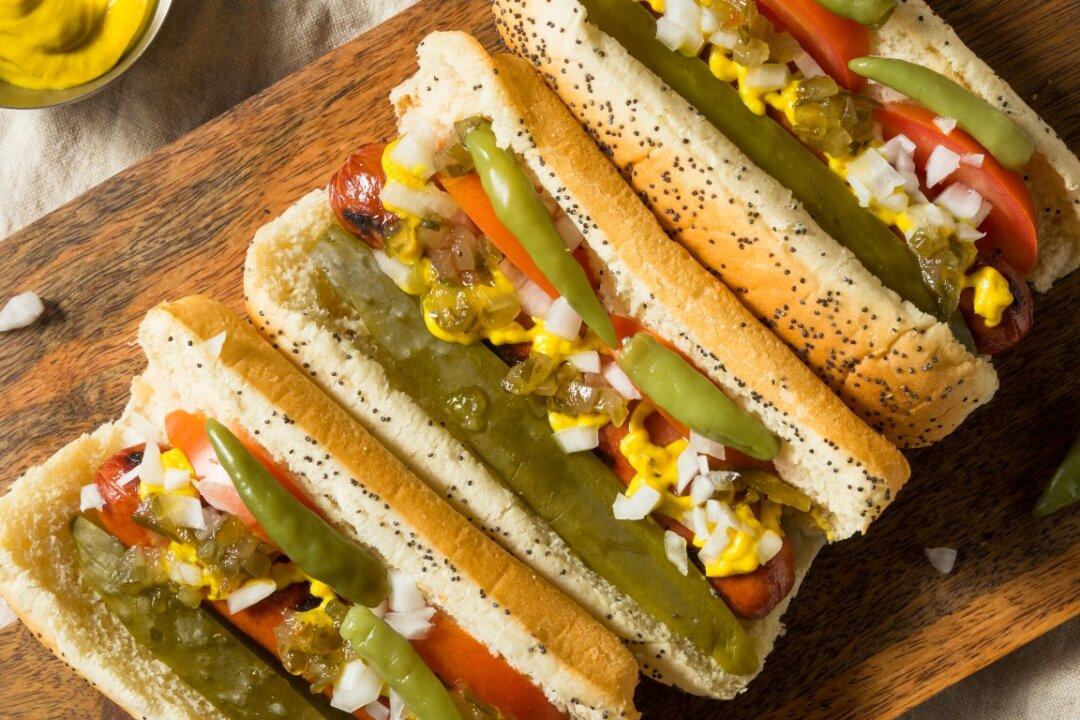“I’ll take a dawg, run it troo da gahden, in a paper bag ta go,” said my friend Danny Higgins, adopting a strong Chicago accent as he explained how to order the works on a hot dog in his city. We sat eating a couple of dogs together at Mustard’s Last Stand near Northwestern University’s campus. My wife Tip and I were in Chicago for the weekend to celebrate both the Fourth of July and National Hot Dog Month, trying to sort out how the city came to have its own way of eating this particular American favorite.
My Chicago friend and food-enthusiast Geoff Burton happily informed me of the basics: a Vienna Beef hot dog in a poppy-seed bun, topped with yellow mustard, piccalilli (a pickle relish often the bright color of green candied cherries), onion, tomato, a pickle spear, sport peppers (short, pickled, medium-spicy green peppers similar to pepperoncini), and celery salt. Chicago dogs are typically steamed, simmered, or sometimes char-grilled, but never boiled or left on a roller like at the gas station. Natural casing is not required, but it does give the dog that marvelous snap when you bite into it. And good lord, don’t ask for ketchup, positively verboten by the faithful.





